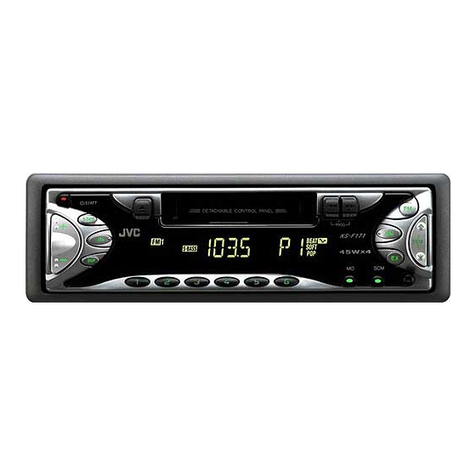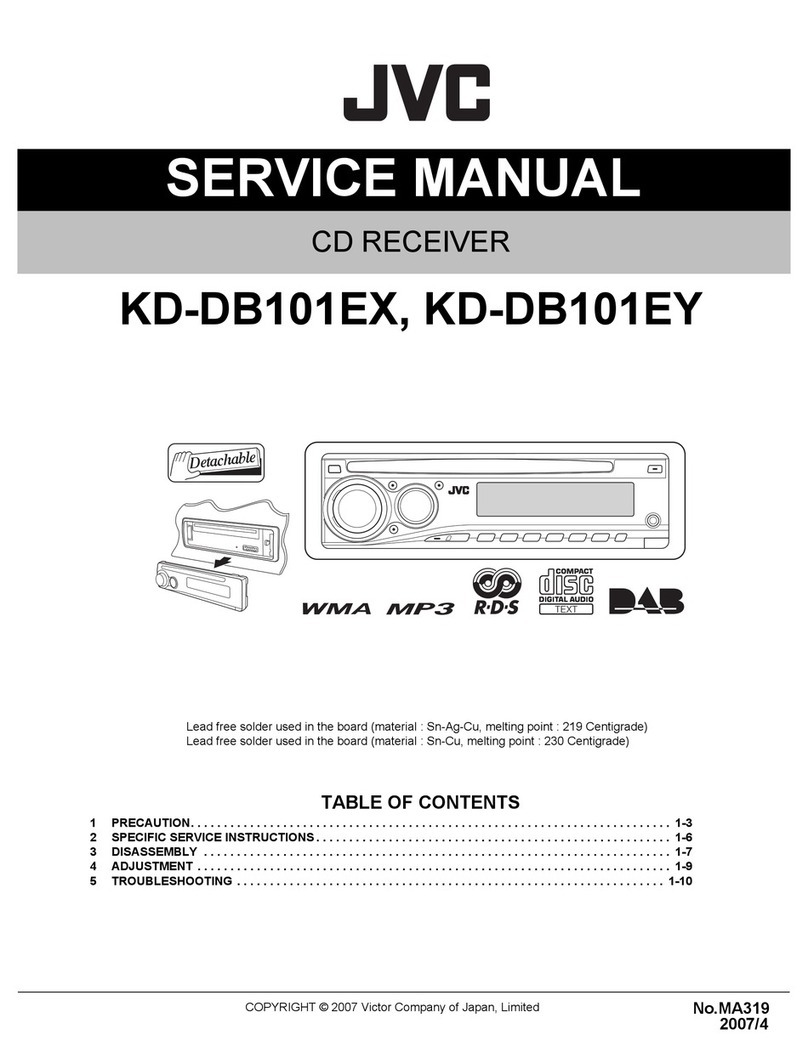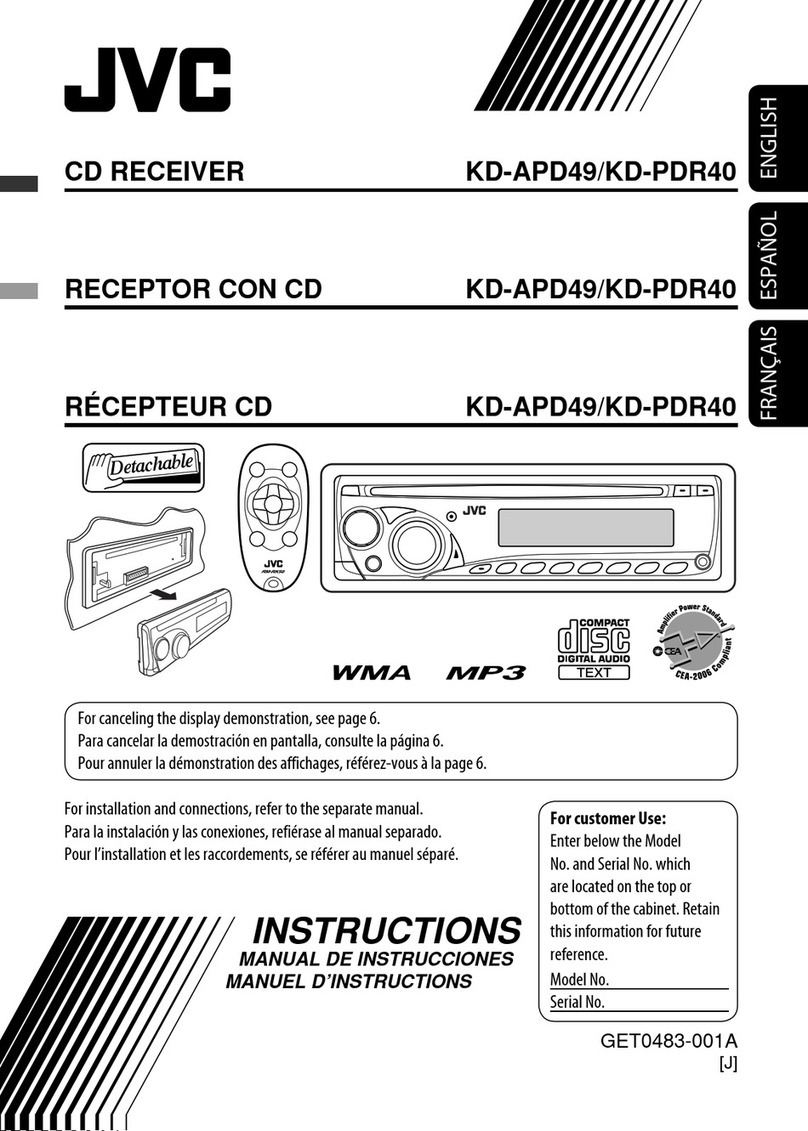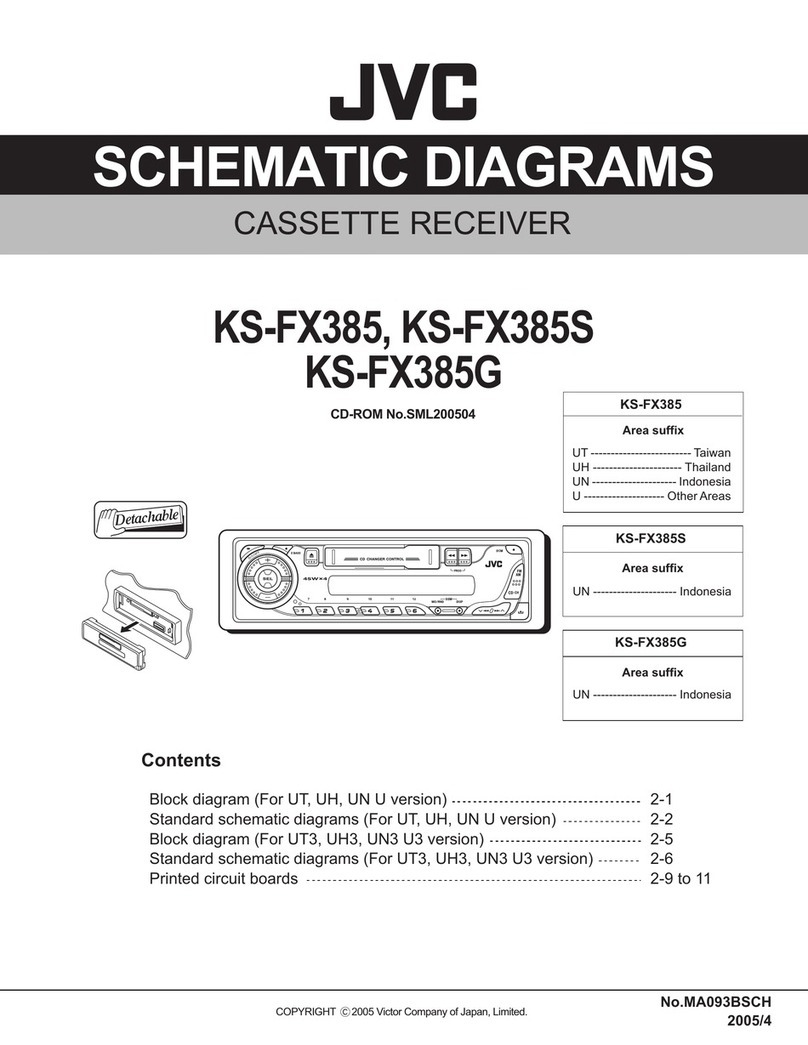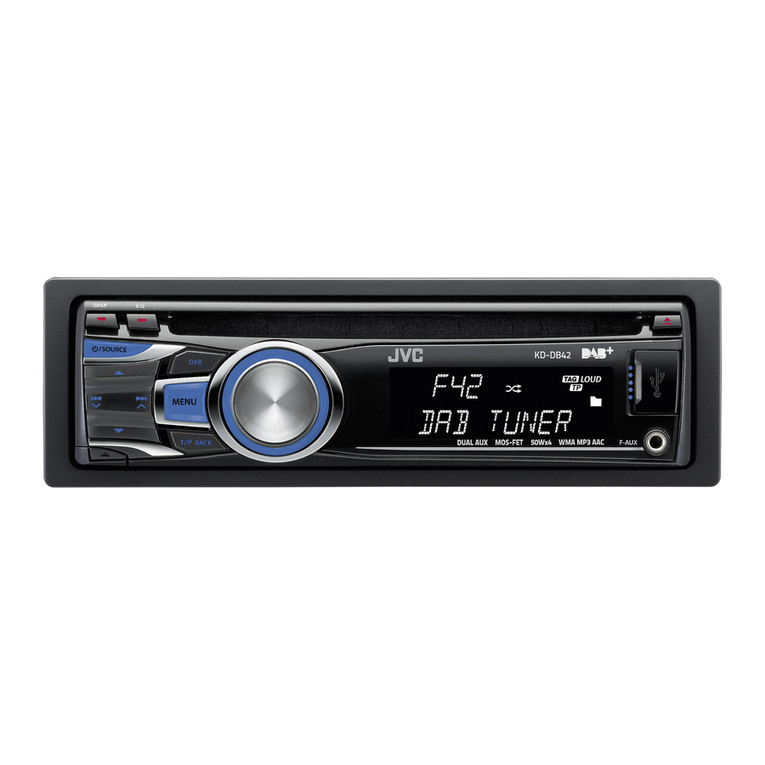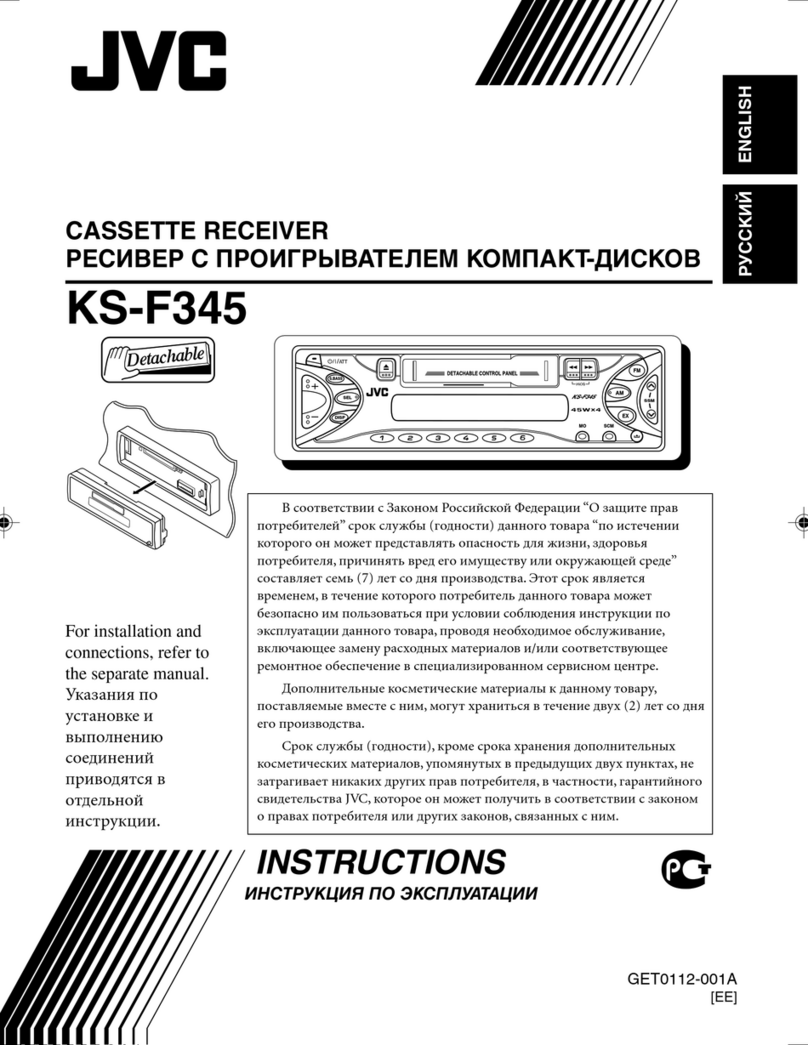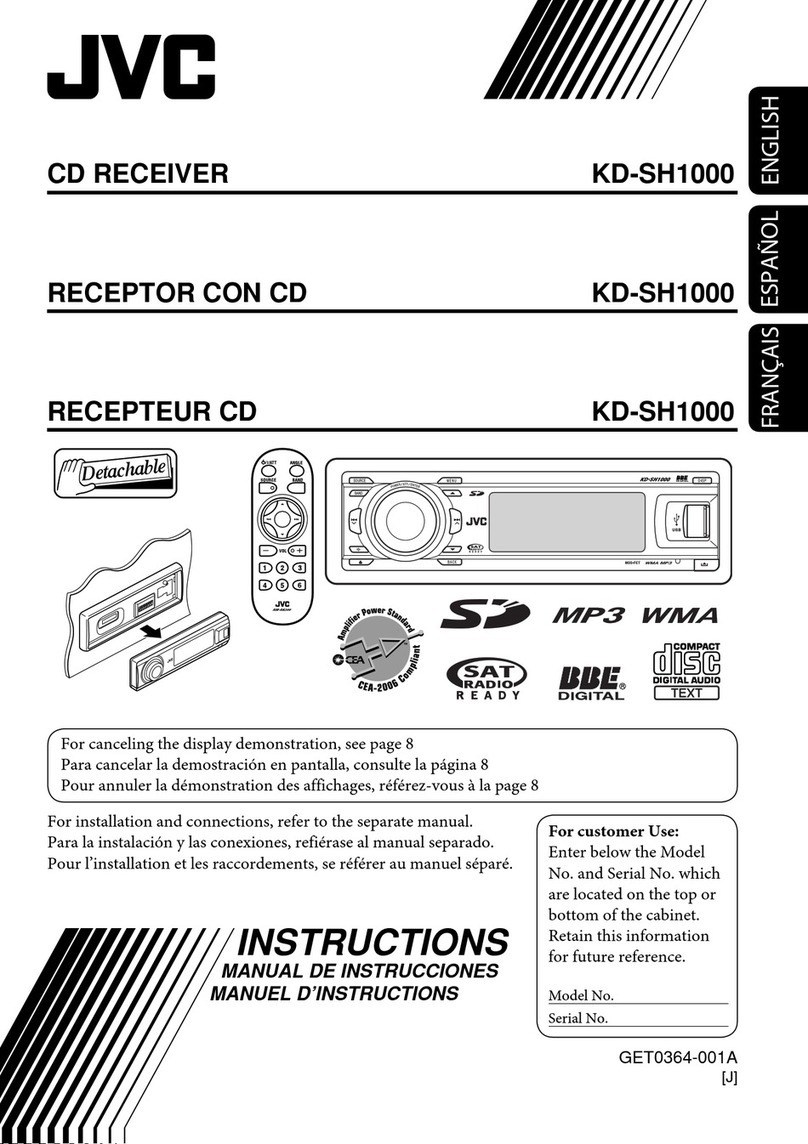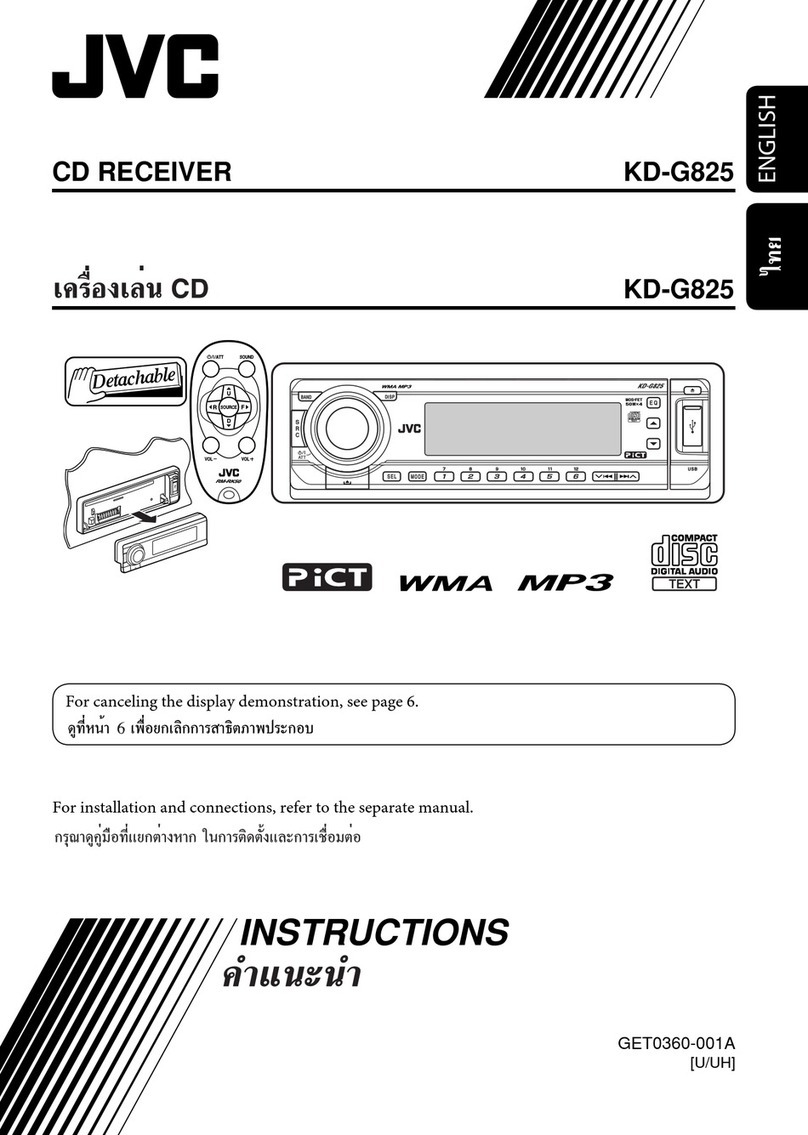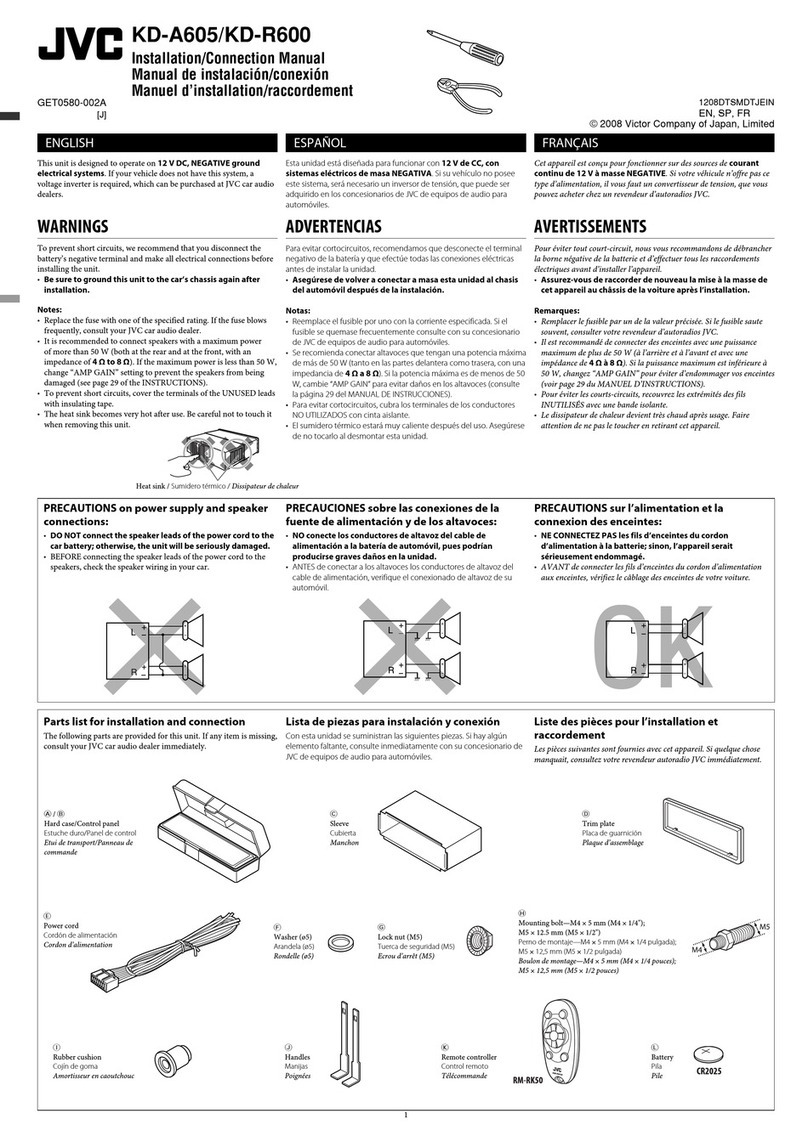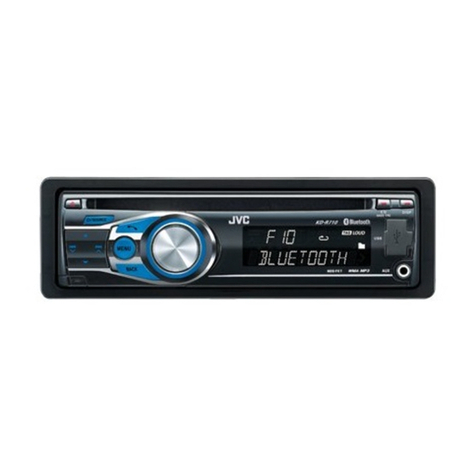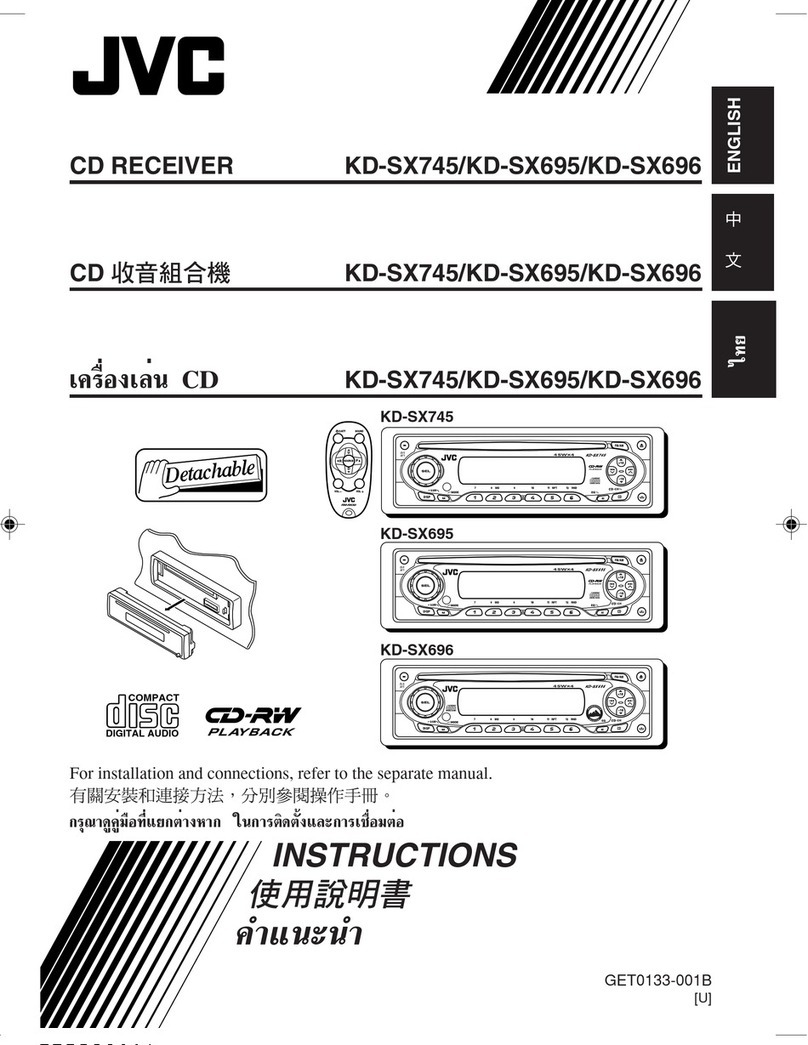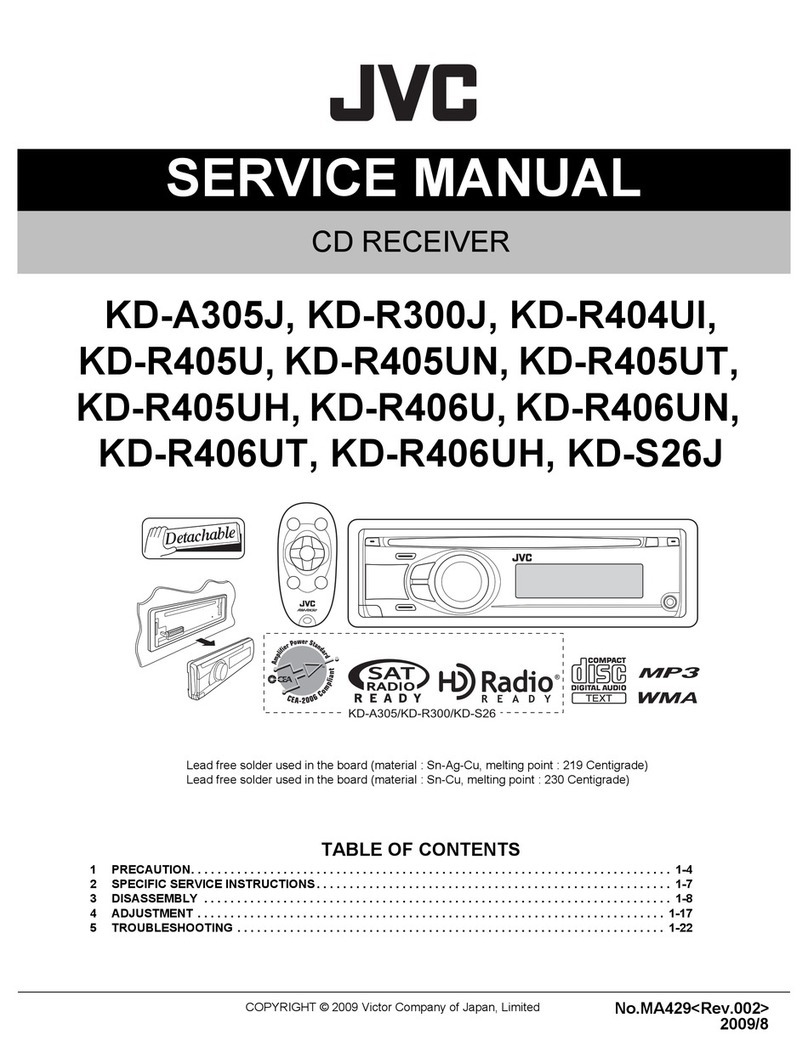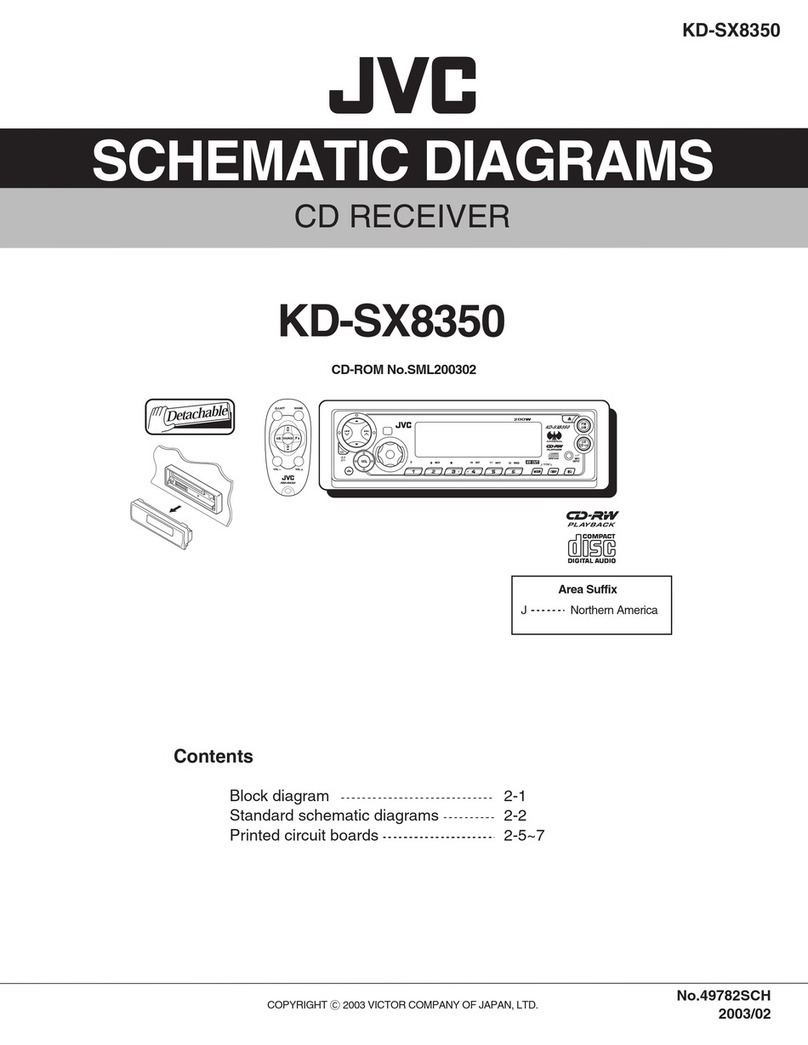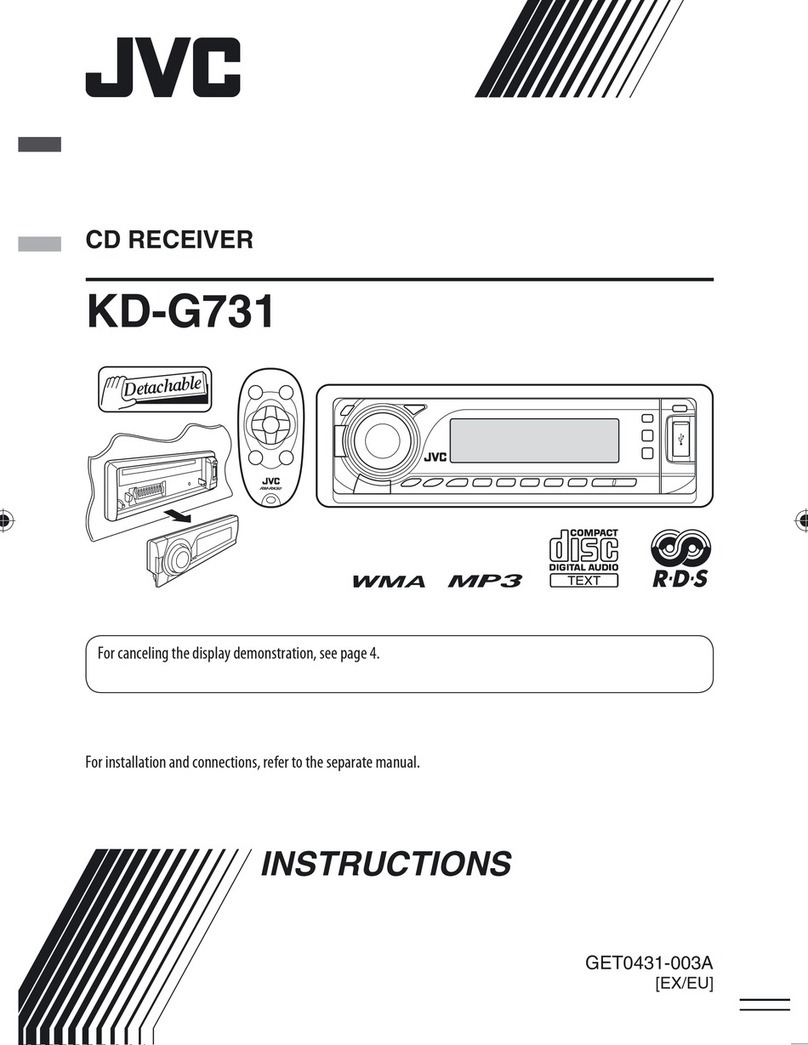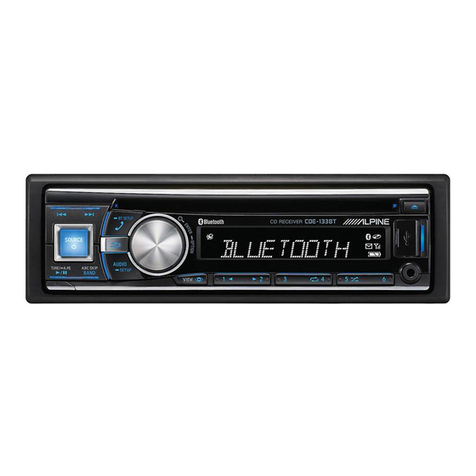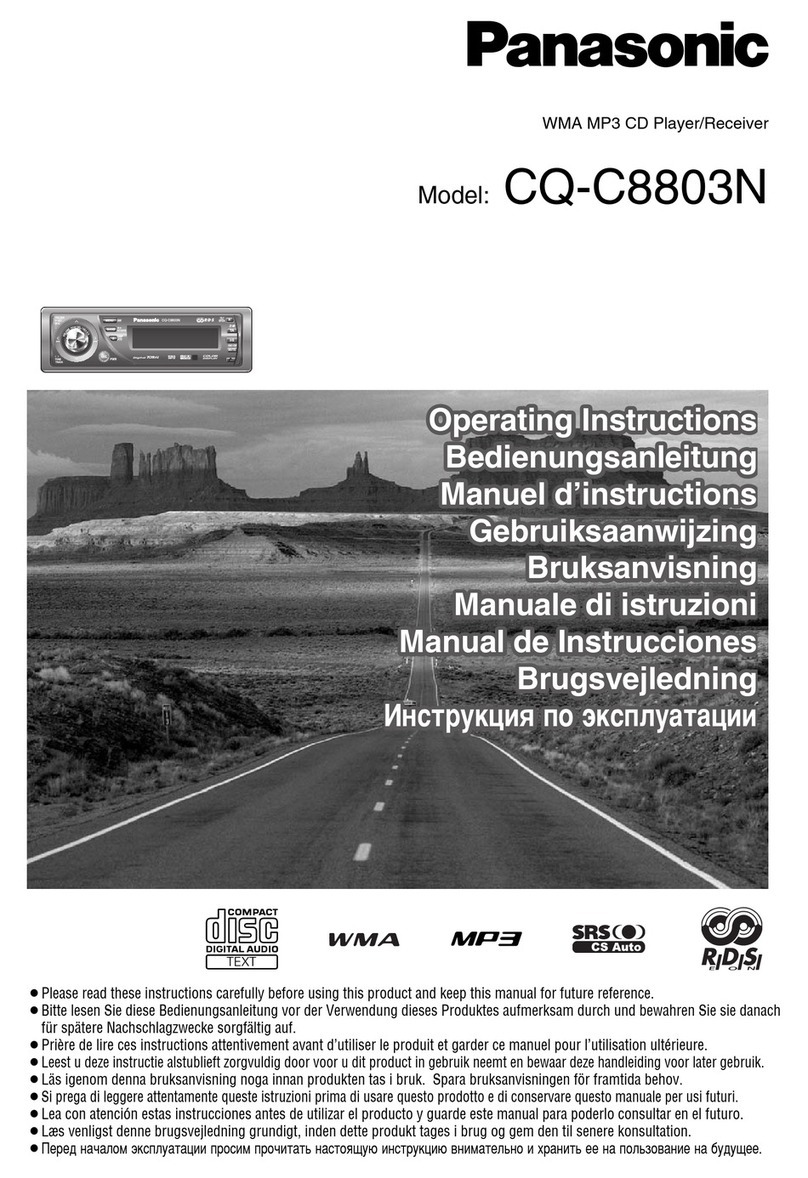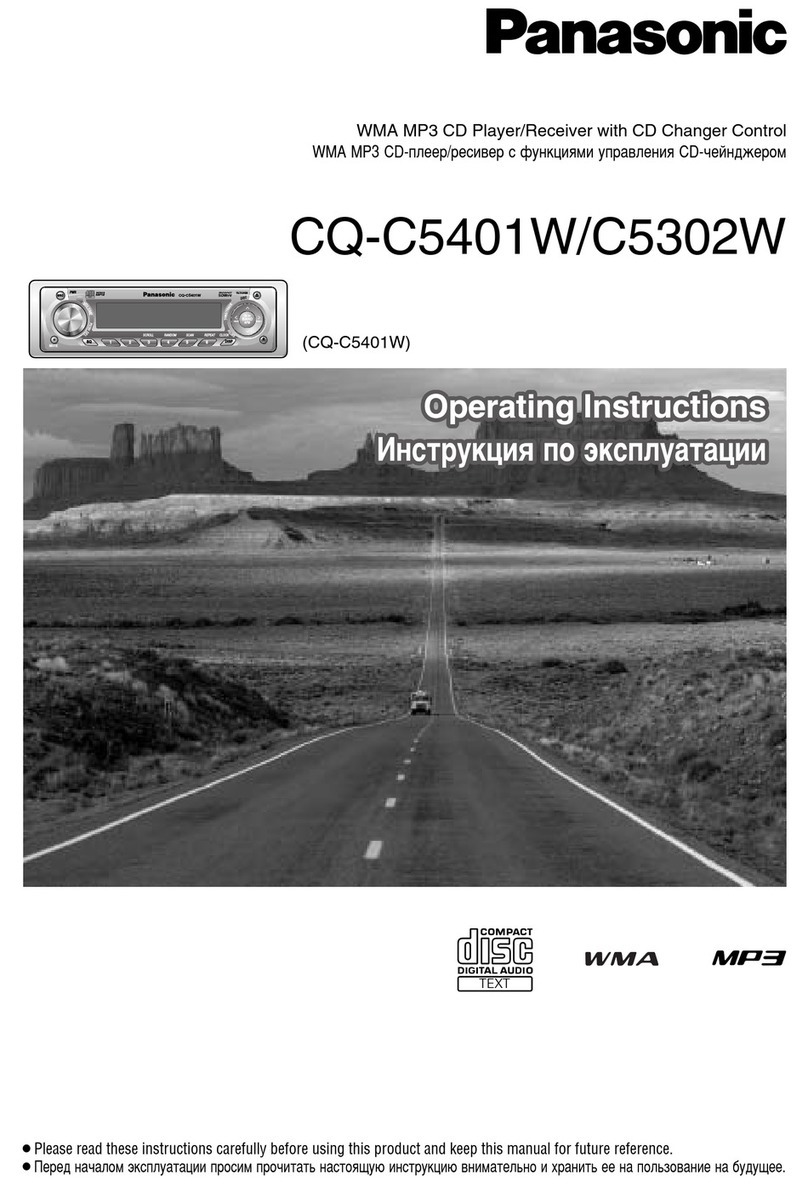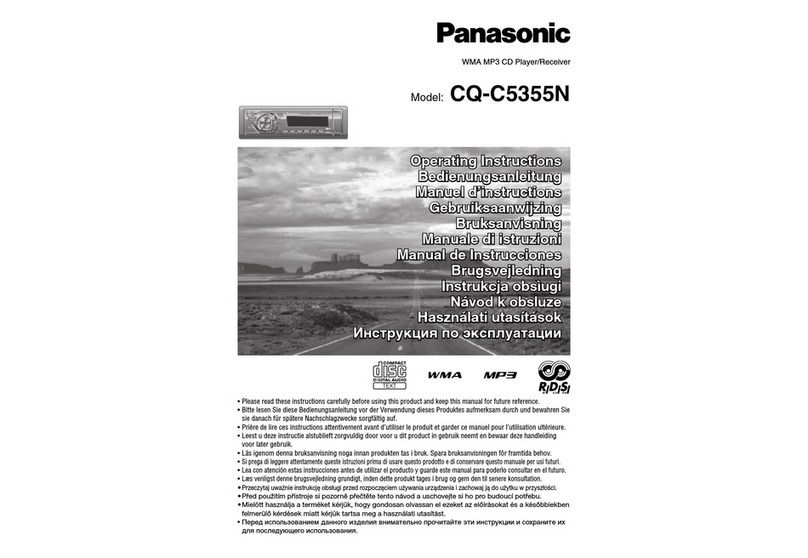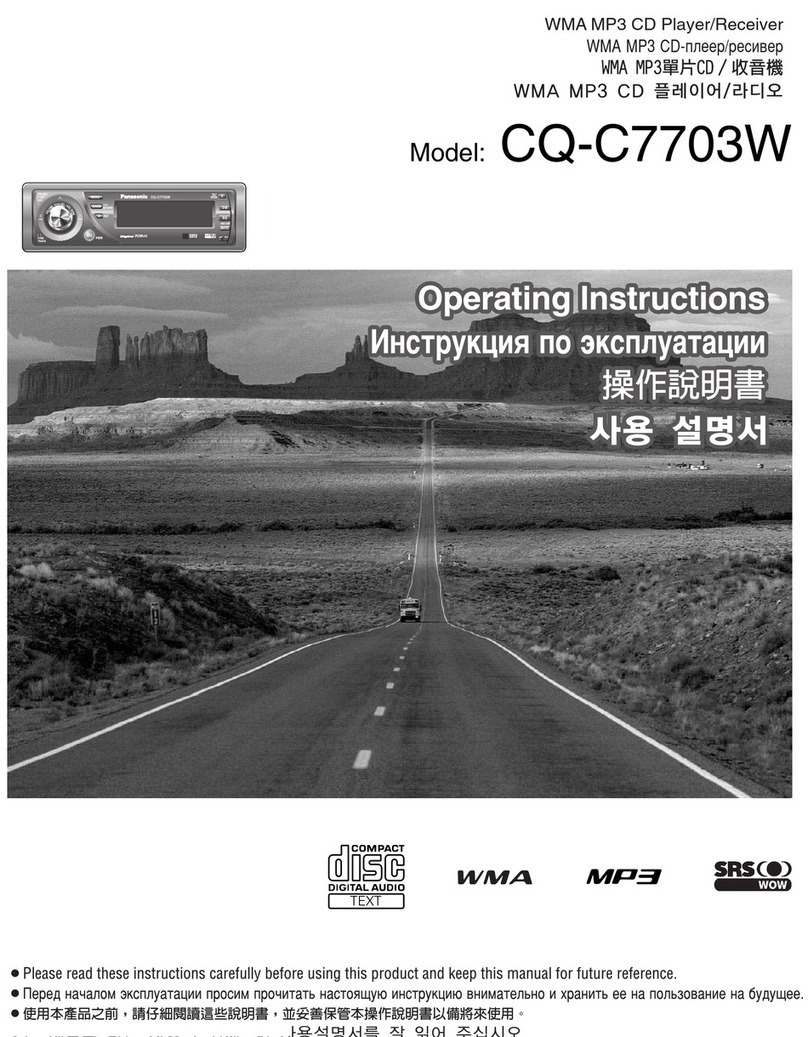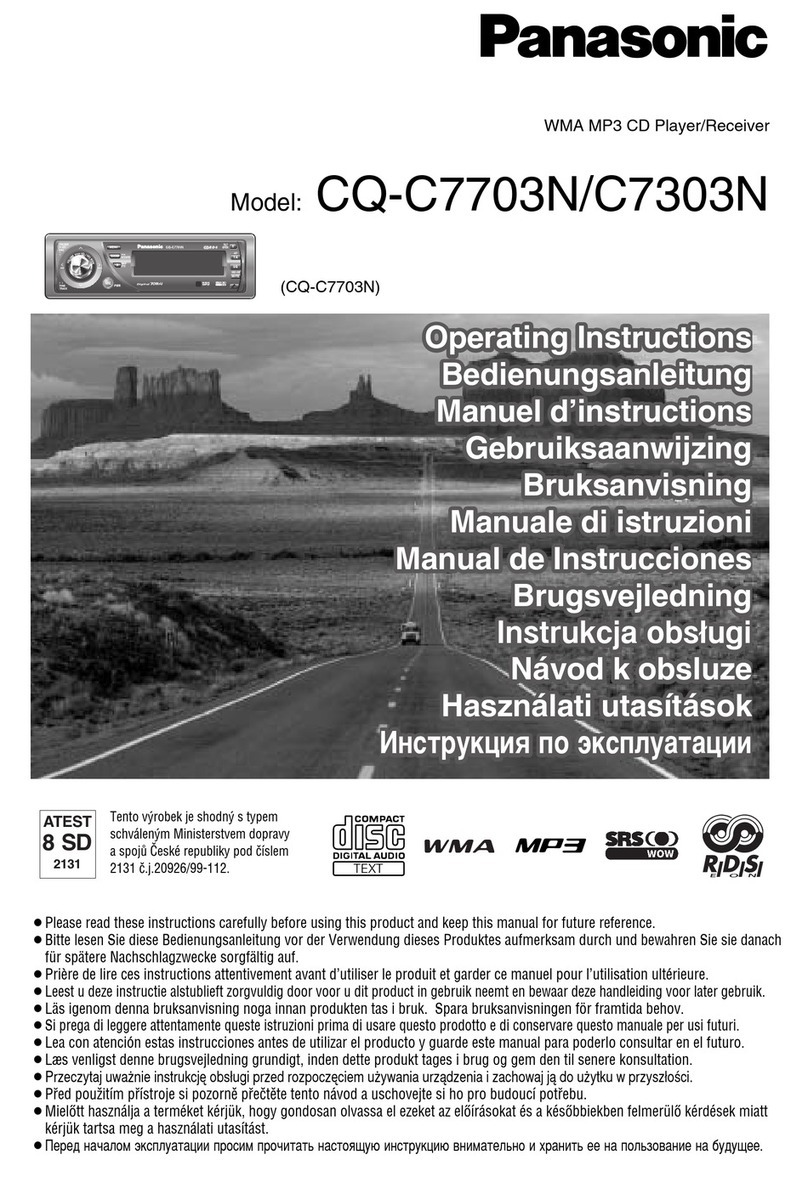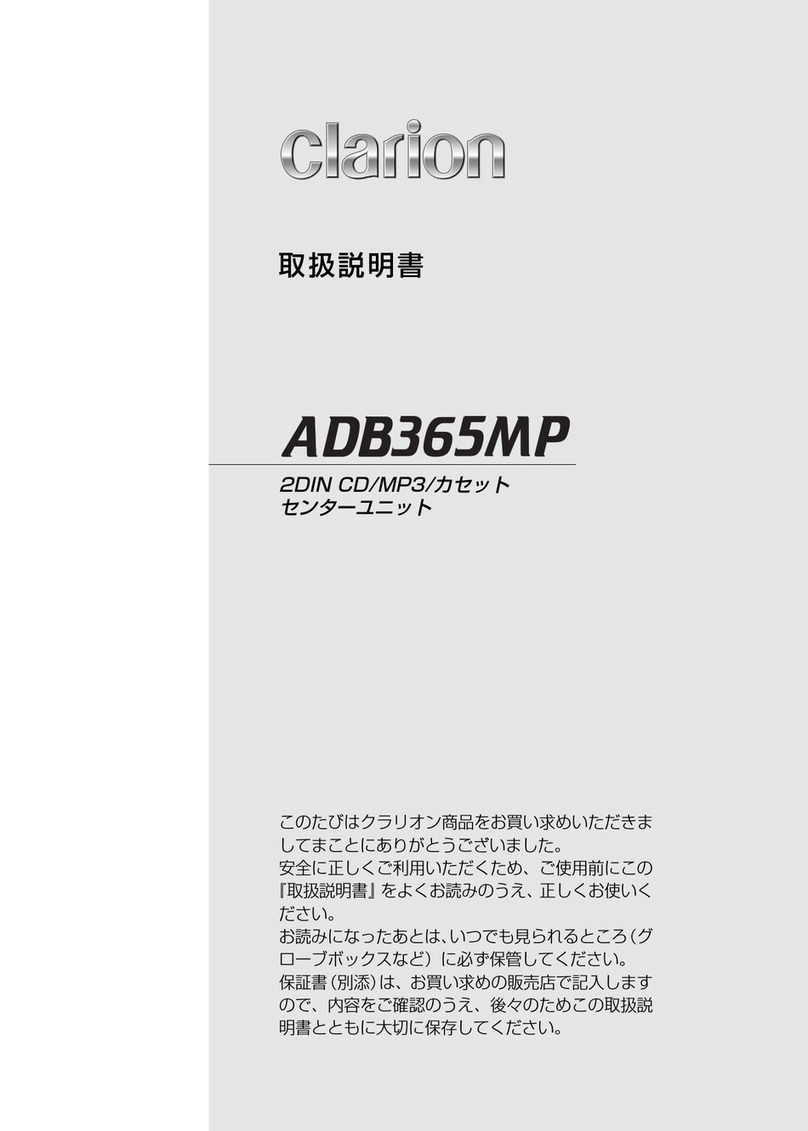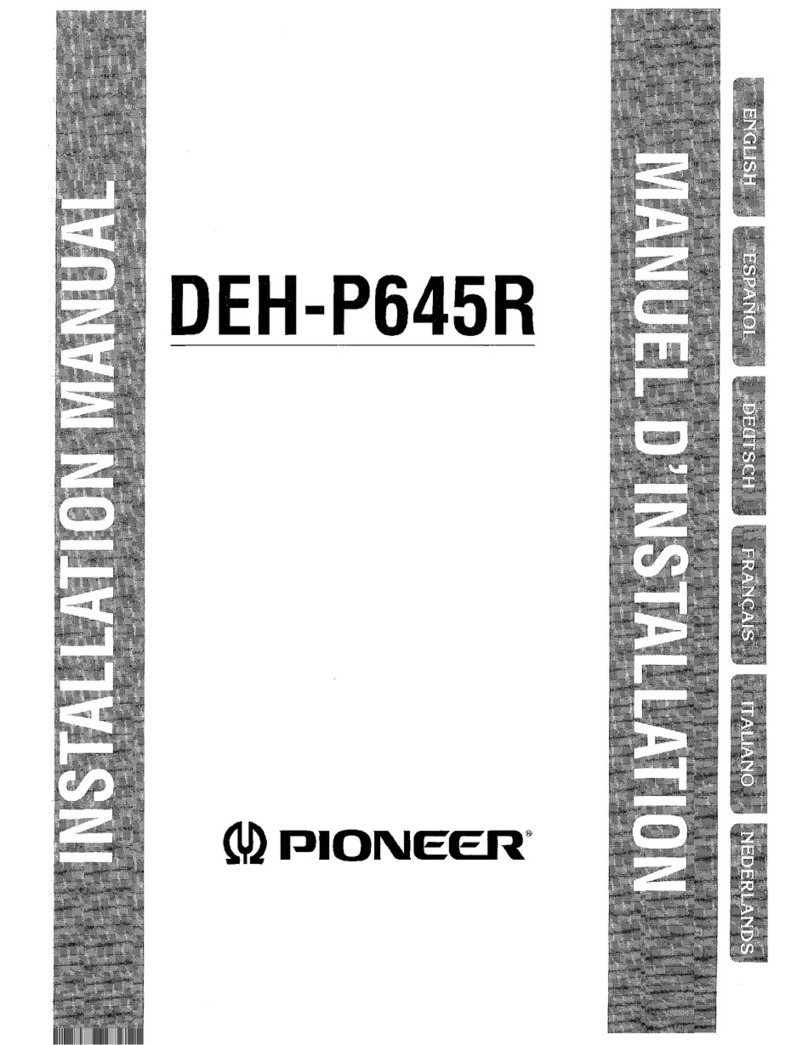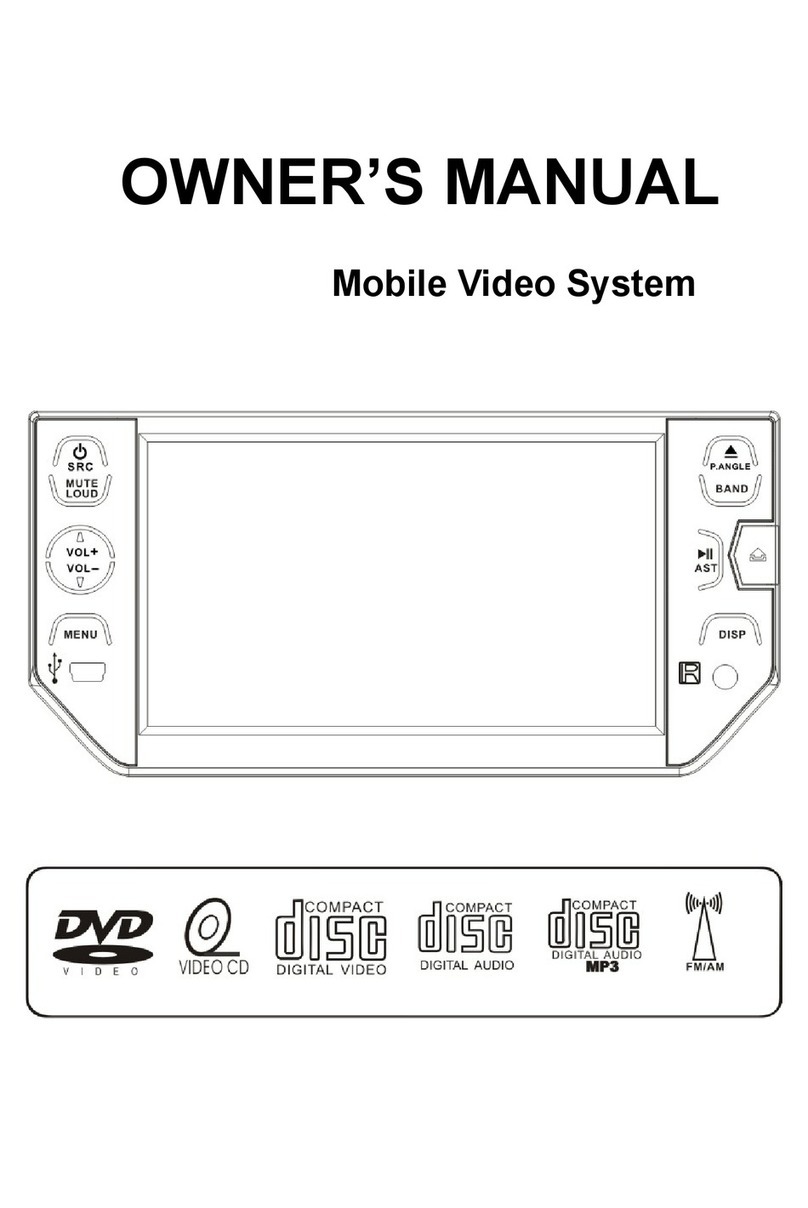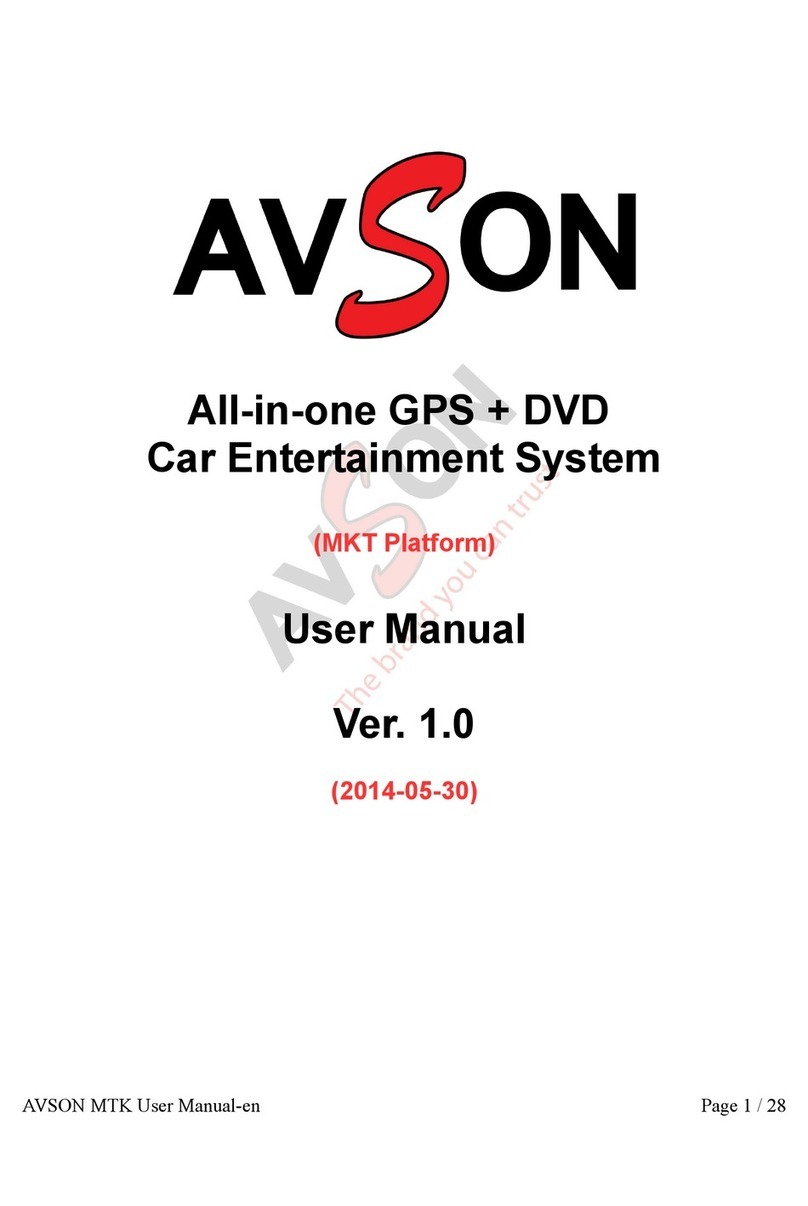
1-2 (No.MA254)
SPECIFICATION
AUDIO AMPLIFIER SECTION
Power Output Only the United States 20 W RMS ×4 Channels at 4 Ωand [< or =] 1% THD+N
Signal to Noise Ratio Only the United States 80 dBA (reference: 1 W into 4 Ω)
In countries other than the United States 70 dB
Maximum Power Output In other countries Front 50 W per channel
Rear 50 W per channel
Continuous Power Output
(RMS)
In other countries Front 20 W per channel into 4 Ω, 40 Hz to 20 000 Hz at no more than 0.8%
total harmonic distortion.
Rear 20 W per channel into 4 Ω, 40 Hz to 20 000 Hz at no more than 0.8%
total harmonic distortion.
Load Impedance 4 Ω(4 Ωto 8 Ωallowance)
Equalizer Control Range Frequencies 60 Hz, 150 Hz, 400 Hz, 1 kHz, 2.5 kHz, 6.3 kHz, 15 kHz
Level ±10 dB
Line-In Level/Impedance 1.5 V/20 kΩload
Line-Out Level/Impedance Only the United States and Southern Europe 2.5 V/20 kΩload (full scale)
In other countries 2.5 V/20 kΩload (full scale)
Output Impedance Only the United States and Southern Europe 1 kΩ
In other countries 2.5 V/20 kΩload (full scale)
Subwoofer-Out Level/
Impedance
Only the United States and Southern Europe 2.0 V/20 kΩload (full scale)
In other countries 2.5 V/20 kΩload (full scale)
Color System Only the United States NTSC
In Europe PAL
In other countries NTSC/PAL
Video Input (composite) 1 Vp-p/75 Ω
Video Output (composite) 1 Vp-p/75 Ω
Other Terminals Only the United States and Europe 2nd AUDIO OUT, CD changer, Steering wheel remote input (OE RE-
MOTE)
In other countries 2nd AUDIO OUT, CD changer
TUNER SECTION
Frequency Range FM Only the United States 87.5 MHz to 107.9 MHz (with channel interval set to 100 kHz or 200
kHz)
Only the United States 87.5 MHz to 108.0 MHz (with channel interval set to 50 kHz)
In other countries 87.5 MHz to 108.0 MHz
AM Only the United States 530 kHz to 1 710 kHz (with channel interval set to 10 kHz)
Only the United States 531 kHz to 1 602 kHz (with channel interval set to 9 kHz)
In Europe (MW) 522 kHz to 1 620 kHz
In Europe (LW) 144 kHz to 279 kHz
In other countries 531 kHz to 1 602 kHz
FM Tuner Usable Sensitivity 11.3 dBf (1.0 µV/75 Ω)
50 dB Quieting Sensitivity 16.3 dBf (1.8 µV/75 Ω)
Alternate Channel Selectivity (400 kHz) 65 dB
Frequency Response 40 Hz to 15 000 Hz
Stereo Separation 35 dB
Capture Ratio 1.5 dB
AM Tuner ( In other countries ) Sensitivity 20 µV
Selectivity 35 dB
MW Tuner ( In Europe ) Sensitivity 20 µV
Selectivity 35 dB
LW Tuner ( In Europe ) Sensitivity 50 µV
